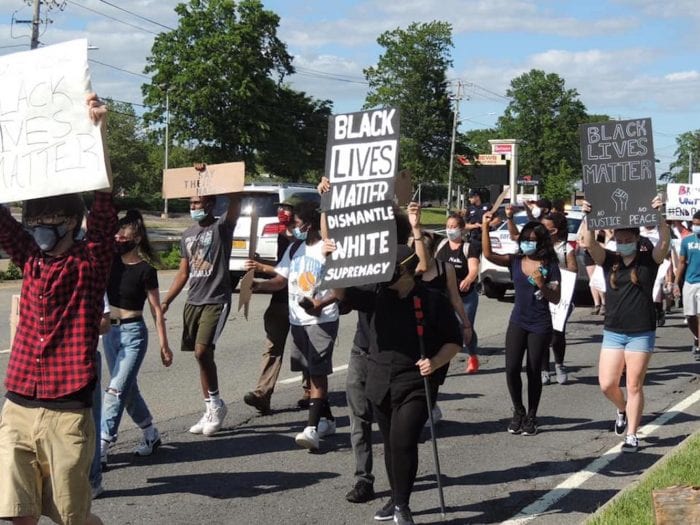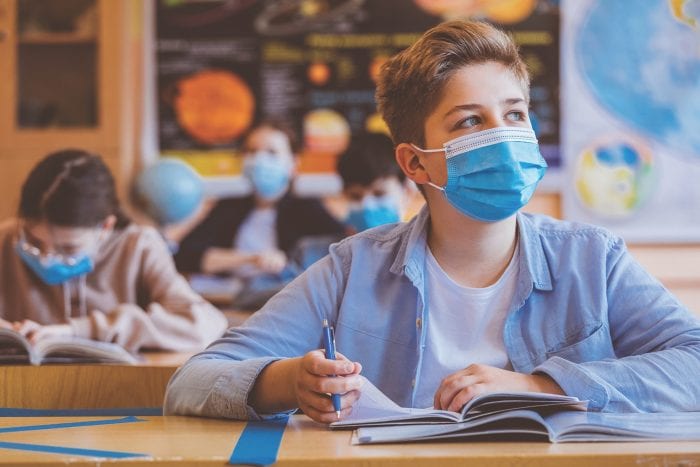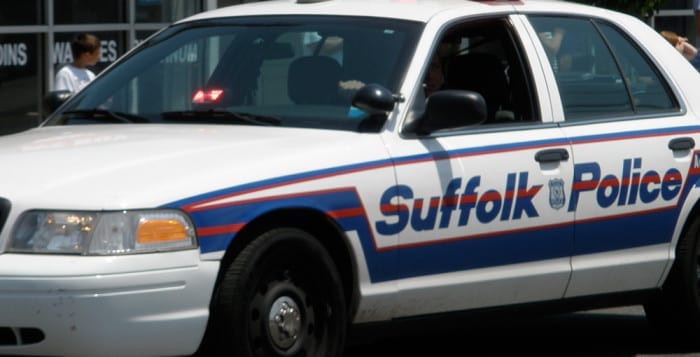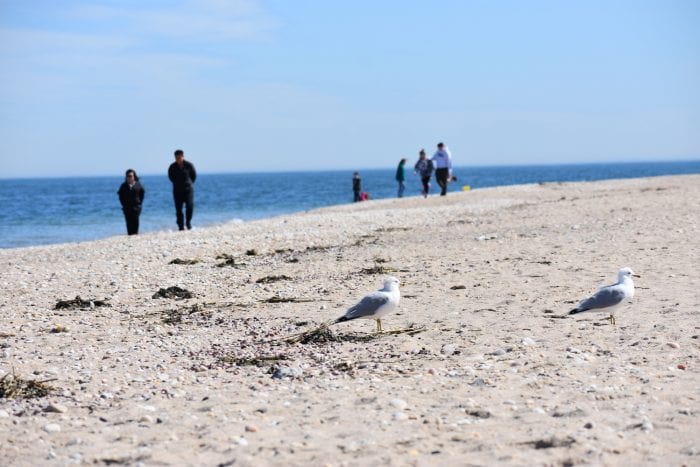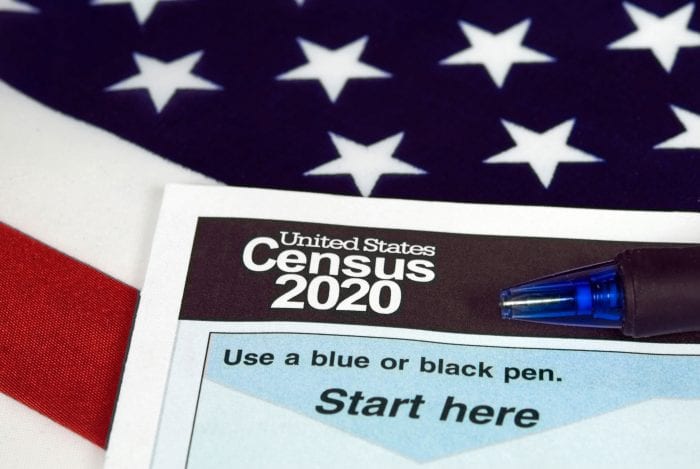While 2020 will be remembered for the coronavirus, this year’s summer will be recorded in the history books for the millions of voices speaking out against injustice and police brutality across the country.
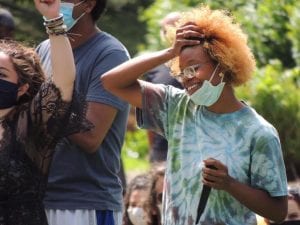
The H. Lee Dennison Building in Hauppauge will be the site of a rally this Saturday, Aug. 1, where activist group Long Island Fight for Equality intends to host an event to speak out against racial injustice and inequality from 2 to 6 p.m. The rally as well as a march comes more than two months after George Floyd’s death at the hands of a Minneapolis police officer which reignited outrage over police brutality in the U.S.
The summer has been filled with hundreds of Black Lives Matter protests such as in Hauppauge, Port Jefferson Station, Stony Brook and multiple ones through the streets of Smithtown and Huntington in June and July. While most have been peaceful, some have seen the conflict between protester and cop escalate, such as when at a recent Babylon protest, three participants from Black White Brown United were arrested, including a Stony Brook resident charged with harassment, according to Suffolk County police.
Couple Ashley Payano, 23, and Ian Atkinson, 26, are organizing the Aug. 1 Hauppauge rally and march. Together, they have helped assemble as well as attend about half-a-dozen protests and rallies in the last couple of months. Atkinson lives in Farmingville, while Payano splits her time between the Bronx and Long Island, with plans to move to the Island in the future. They are just two among scores of protest leaders, but having attended many such protests on Long Island, they said momentum is still strong.
“As a young Black person, these struggles affect me and my family directly so I couldn’t imagine not taking part in it,” Payano said.
Atkinson said the number of people at these protests has varied. At one in Stony Brook near the Smith Haven Mall, there were more than 1,000 attendees, while a Port Jeff Station protest saw around 150 people at its peak. Payano said a fundraising aspect has been added to many of the rallies, with protesters asked to bring canned goods and hygiene products to be donated to those in need.
Payano said she feels this is an extension of the civil rights movement and believes that the passion will lead to actual change.
“I think that instead of this being about protests, I think this is a movement,” she said. “It is for change. I think it’s important to continue to practice civil disobedience and civil unrest.”
Atkinson said he is driven by frustration because he feels many have not experienced the freedom and equality that the country stands for.
“Clearly, it hasn’t been the way it’s supposed to be for certain populations,” he said. “African Americans, minorities, are not treated fairly or equally in this country.”
He said he also believes that the civil rights movement leaders didn’t get everything they were fighting for.
“We know what we’re fighting for and we’re not looking to stop until we’ve gotten it,” he said.
Several weeks after the start of the BLM protests, a counter movement, largely either called pro-police rallies or Blue Lives Matter rallies have garnered hundreds of participants, such as one in Port Jefferson Station June 22. Though many of these rallies have been led by and have featured conservative figures such as U.S. Rep. Lee Zeldin (R-NY1) and former Suffolk GOP chairman John Jay LaValle, participants have called on people to support police, who they say have been attacked unfairly.
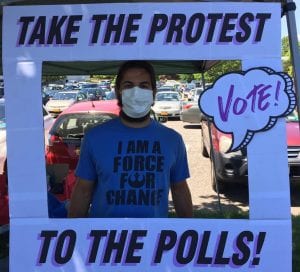
Atkinson said the Blue Lives Matter rallies have added to his frustrations.
“They’re completely missing the point,” he said. “They don’t stand for anything. It’s just frustrating because they’re kind of going against the belief that everyone should be equal.”
Payano, who has been involved in music, acting and real estate, and is planning to take some college courses this school year, said she has been politically active since age 15, as her father spoke out often about housing issues in the Bronx. She said she has been part of similar efforts through the years when a young Black person’s death was followed by protests, but she hasn’t seen them last as long as they have now.
The Bronx native said the more she comes to Long Island the more she notices de facto segregation and the impact of redlining, which has disturbed her. She said she also notices that people will sometimes stare at her when she and Atkinson are on Long Island. However, she added that she has seen a diverse group of people of all different backgrounds and ages at rallies throughout the Island, except in Brentwood where there were more attendees of color.
“It’s really nice to meet people from all backgrounds who believe in the same thing,” she said. “And the people who honk their cars and pass by, it showed me there are more people in support of this movement than not.”
Atkinson, who works with the developmentally disabled to help them adapt to everyday life, is looking toward a future with Payano, who he met at a paint night in Manhattan. The Long Islander said he hopes to see their children grow up in a different environment.
“I don’t want them to grow up in a community where they’re not looked at like everyone else,” he said.
Atkinson and Payano said in all the protests they’ve been part of, everyone has been asked to wear a mask and stay home if they are immunocompromised. So far, the majority have seemed to comply. The couple have also encountered counter protesters, but Atkinson said they welcome conversation, even though at times it can be scary after hearing of stories such as a Black Lives Matter protester being attacked or having water thrown on them.
“We welcome the discussion as long as they are willing to hear us out,” he said.
Payano said while some discussions are disheartening, she understands why it’s hard for people to believe that their loved ones or even themselves “have been practicing bigotry.” She said she looks at the debates from a sociological standpoint.
“Our brain is programmed to protect us from things that will hurt us whether it’s emotionally or our sense of self or identity or belief system that we have ingrained in us, which is very well capable of growth of change,” she said. “But a lot of people have a belief system, and they would prefer to avoid the instability of having to start from scratch.”
Regarding change, Payano is optimistic.
“It’s going to take a while, but I believe it’s possible,” she said.

